Your cart is currently empty!
Blog
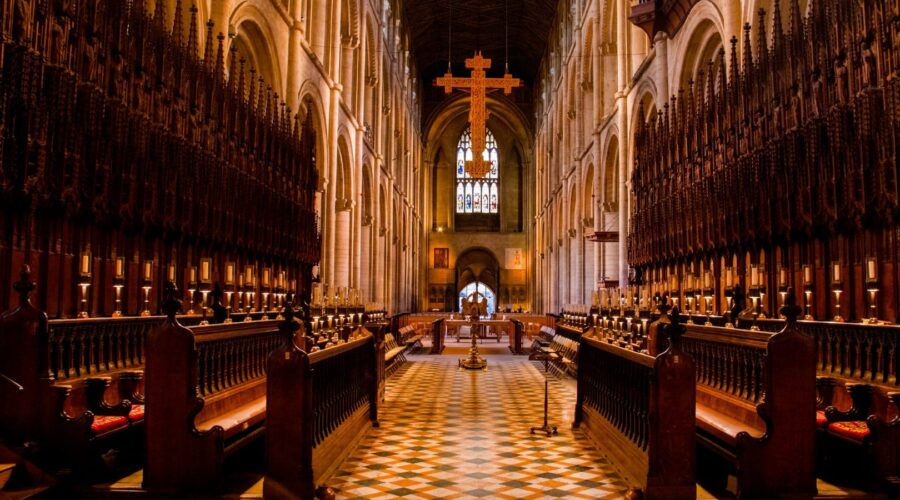
The Ultimate Guide to Sunday Mass Today: Everything You Need to Know
“`html
Importance of Sunday Mass
Sunday Mass, also known as the Eucharist or Lord’s Supper, is a central part of the Christian faith. It is a time for Catholics to come together and celebrate the resurrection of Jesus Christ, receive Holy Communion, and deepen their spiritual connection.
Attending Sunday Mass regularly offers numerous benefits, including:
- Spiritual nourishment: Receiving Holy Communion allows us to partake in the body and blood of Christ, strengthening our union with Him.
- Community building: Mass brings together the Church community, fostering a sense of belonging and support.
- Moral guidance: Homilies and readings during Mass provide moral teachings and guidance for our daily lives.
- Grace and forgiveness: Through the sacrament of Reconciliation, which is often offered before Mass, Catholics can receive forgiveness for their sins.
Structure of Sunday Mass
Sunday Mass typically follows a standardized structure:
1. Entrance Rites
The Mass begins with the entrance hymn, which sets the tone for the celebration. The priest then greets the congregation and offers a brief introduction.
2. Liturgy of the Word
This part of the Mass consists of readings from Scripture, a responsorial psalm, and a homily by the priest or deacon. The readings and homily focus on themes related to the season or special occasion.
3. Liturgy of the Eucharist
This is the central part of the Mass, where the bread and wine are consecrated and become the body and blood of Christ. The congregation prays, sings, and participates in the Eucharistic celebration.
4. Communion
During Communion, Catholics receive the body and blood of Christ. The priest distributes the Eucharist in either consecrated bread (host) or consecrated wine (chalice).
5. Concluding Rites
The Mass concludes with a final blessing from the priest. The congregation sings the closing hymn and disperses to continue their day.
Finding a Sunday Mass
There are various ways to find a Sunday Mass near you:
- Parish websites: Most Catholic parishes have websites that list Mass times and locations.
- Diocesan websites: Diocesan websites provide comprehensive information about parishes and their respective Mass schedules.
- Catholic app: Mobile apps like “MassTimes” and “Catholic Mass Times” offer real-time Mass schedules.
Tips for Attending Sunday Mass
To make the most of your Sunday Mass experience, consider the following tips:
- Arrive early: Arriving before the scheduled start time allows you to settle in and prepare your heart for the celebration.
- Dress respectfully: Sunday Mass is a sacred occasion that calls for respectful attire.
- Be mindful: Pay attention to the readings, homily, and prayers to engage fully in the liturgy.
- Receive Communion: If you are properly disposed, take advantage of the opportunity to receive the consecrated bread and wine.
- Participate: Sing the hymns, respond to the readings, and engage in the communal prayers.
Conclusion
Sunday Mass is an essential practice for Catholics. It provides spiritual nourishment, fosters community, offers moral guidance, and grants forgiveness. By attending Sunday Mass regularly and actively participating in the liturgy, we strengthen our relationship with God and deepen our understanding of our Catholic faith.
“`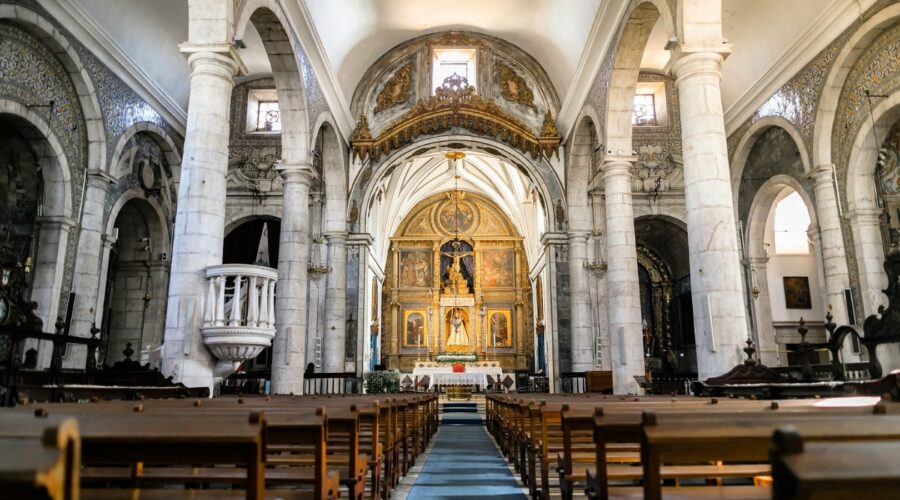
Unlocking the Power of Generation Church: A Comprehensive Guide
Introduction
In today’s evolving religious landscape, the concept of “Generation Church” has gained significant traction. These churches, often led by young, passionate leaders and catering to a younger demographic, offer a fresh and transformative approach to faith. This comprehensive guide will delve into the key aspects of Generation Church, exploring its unique characteristics, benefits, and strategies for growth.
Defining Generation Church
Generation Church is a unique type of church that primarily targets and attracts young adults, typically between the ages of 18 and 35. These churches prioritize creating a welcoming, relatable, and engaging environment that resonates with the values and aspirations of the younger generation.
Characteristics of Generation Church
- Contemporary worship: Generation Churches often incorporate modern music and technology into their worship services to appeal to the preferences of their audience.
- Relevant teaching: Sermons and teachings are tailored to address real-life issues and challenges faced by young adults.
- Community focus: Building a sense of community and belonging is central to Generation Churches, fostering connections among members.
- Technology integration: These churches leverage technology to engage with their audience, such as online streaming, social media, and mobile apps.
Benefits of Generation Church
Attending a Generation Church offers numerous benefits for young adults seeking a meaningful and fulfilling faith experience:
Spiritual Growth
- Relevant teachings: Sermons and teachings connect with the experiences and perspectives of young adults, fostering spiritual growth.
- Community support: The close-knit community provides a supportive environment for members to learn, grow, and support each other.
Personal Development
- Leadership opportunities: Generation Churches often provide opportunities for young adults to develop their leadership skills.
- Mentorship: Young adults can connect with experienced mentors for guidance and support in their faith journey.
Social Connections
- Community events: Churches organize social events and activities to foster connections and build relationships.
- Small groups: Small groups provide a smaller, more intimate setting for members to connect and share their experiences.
Strategies for Growth
Generation Churches can implement specific strategies to attract and retain young adults:
Marketing and Outreach
- Social media: Utilize social media platforms to engage with potential attendees and build a community.
- Targeted advertising: Use targeted advertising to reach young adults who are searching for spiritual connections.
- Events and partnerships: Host events and partner with organizations that cater to the target audience.
Creating a Welcoming Environment
- Authenticity: Be authentic and relatable in your communication and interactions with young adults.
- Inclusivity: Create an inclusive environment that welcomes individuals from diverse backgrounds.
- Accessibility: Make the church accessible through online streaming, hybrid services, and flexible schedules.
Engaging Worship and Teaching
- Contemporary worship: Incorporate modern music and technology into worship services to engage young adults.
- Relevant teaching: Focus on teachings that address real-life challenges and provide practical guidance.
- Interactive elements: Use interactive elements such as discussion groups and Q&A sessions to make services more engaging.
Challenges and Opportunities
Generation Churches also face some challenges and opportunities:
Challenges
- Reaching the unchurched: Young adults who are not currently involved in a church can be challenging to reach.
- Competing with secular activities: Generation Churches must compete with a wide range of secular activities for the attention of young adults.
- Sustained engagement: Keeping young adults engaged and active in the church over the long term can be difficult.
Opportunities
- Adapting to change: Generation Churches have the opportunity to adapt quickly to changing cultural and technological trends.
- Reaching a global audience: Online platforms allow Generation Churches to reach a global audience.
- Creating a lasting impact: By investing in the lives of young adults, Generation Churches can make a lasting impact on their faith and values.
Conclusion
Generation Church is a vibrant and transformative movement that offers a unique and compelling approach to faith for young adults. By embracing contemporary worship, relevant teaching, and a strong focus on community, these churches are creating a welcoming and engaging environment where young adults can thrive spiritually, personally, and socially. As Generation Churches continue to evolve, they have the potential to make a significant impact on the future of Christianity.
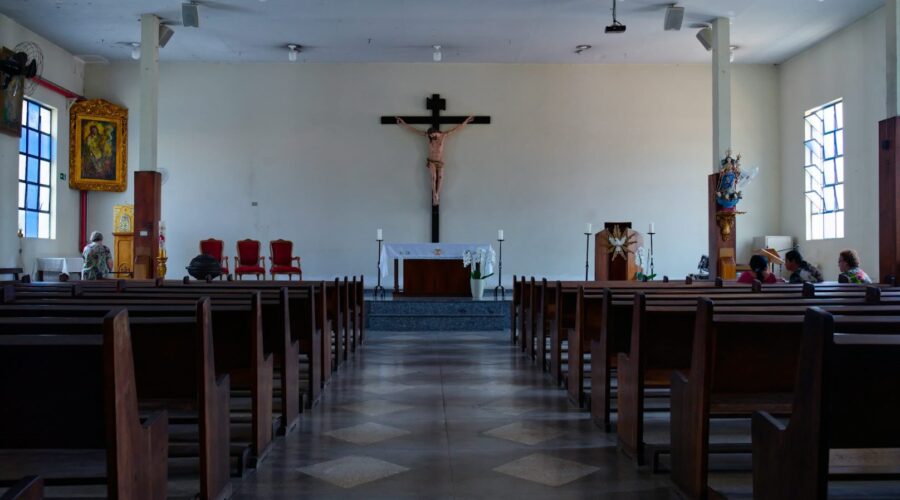
The Monstrance: A Sacred Vessel for the Eucharist
##
What is a Monstrance?
A monstrance is a liturgical vessel used in the Catholic Church to display the consecrated Eucharistic Host (the consecrated bread) to the faithful for adoration.
It is typically made of gold or silver and features a large, transparent window (called a lunula) in which the Host is placed. The monstrance is often decorated with precious stones, enamel, and elaborate designs.
History and Development
The use of monstrances to display the Eucharist originated in the 13th century. Before this, the Host was usually kept in a pyx (a small box) and only brought out for communion.
However, as the practice of Eucharistic adoration became more widespread, a need arose for a more visible and elaborate vessel to display the Host. The first monstrances were simple metal frames with a small window, but over time they evolved into the elaborate and ornate works of art we see today.
Symbolism and Significance
The monstrance is a symbol of the Real Presence of Christ in the Eucharist. The transparent window allows the faithful to see the Host, which represents Christ’s body and blood.
The Host is often placed in a custodia (a small container) within the monstrance to protect it from being damaged or contaminated. The custodia is typically made of gold or silver and is often decorated with jewels and precious stones.
Types of Monstrances
There are two main types of monstrances:
- Solar monstrances: These monstrances are circular in shape, with the window being located in the center. They often have radiating spokes or rays that symbolize the sun and represent Christ as the light of the world.
- Ostensions monstrances: These monstrances are rectangular in shape, with the window being located on one side. They are typically used for processions and Benediction of the Blessed Sacrament.
Use in the Liturgy
Monstrances are used in the liturgy for:
- Eucharistic adoration: The monstrance is placed on the altar or in a prominent location for the faithful to adore the consecrated Host.
- Benediction of the Blessed Sacrament: The monstrance is used to bless the faithful with the consecrated Host. This blessing is typically given after Mass or during special devotions.
- Eucharistic processions: The monstrance is carried in processions, such as on Corpus Christi or during the Forty Hours devotion.
Tips for Using a Monstrance
Here are some tips for using a monstrance:
- Always treat the monstrance with reverence and respect.
- Make sure the monstrance is clean and well-maintained.
- Place the monstrance in a secure location where it will not be disturbed.
- Use a clean cloth or veil to cover the monstrance when it is not in use.
- Never touch the consecrated Host directly.
Conclusion
The monstrance is a sacred vessel that plays an important role in the Catholic Church. It is a symbol of the Real Presence of Christ in the Eucharist and is used in various liturgical celebrations to promote adoration and devotion to the Blessed Sacrament.
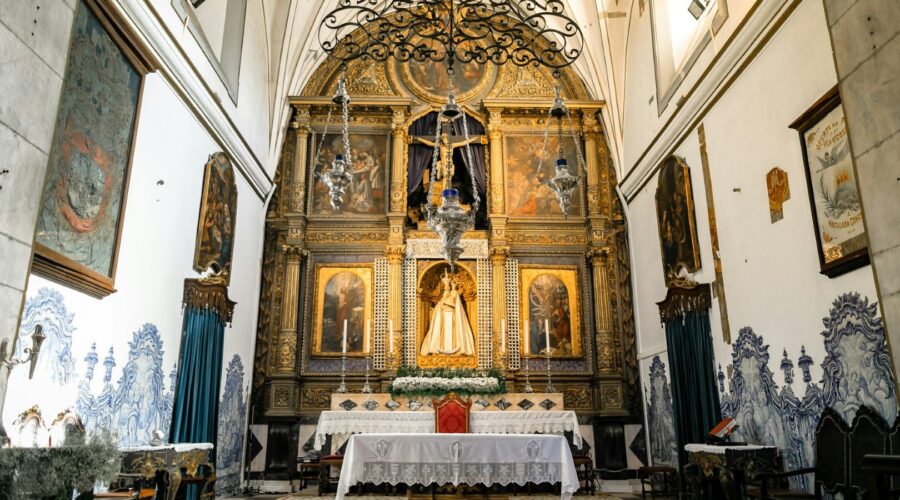
Discover the Origins and Enduring Legacy of the First Christian Church
The Foundation of Christianity
The Christian faith emerged in the 1st century AD, rooted in the teachings of Jesus Christ, a Jewish preacher from Nazareth. His life and message resonated with followers who embraced his teachings of love, compassion, and forgiveness.
The Jerusalem Church
The earliest Christian community was established in Jerusalem, the city where Jesus was crucified and resurrected. Led by Peter, James, and John, this church served as a hub for the first Christians, who gathered for prayer, fellowship, and the breaking of bread.
Spread and Expansion
As the Christian message spread throughout the Roman Empire, new churches were established in cities like Antioch, Ephesus, and Rome. Missionaries such as Paul and Barnabas played a pivotal role in establishing these churches, which grew rapidly despite facing persecution and opposition.
The Role of Paul
Paul, a former persecutor of Christians, became a fervent apostle and played a significant role in spreading the gospel to non-Jewish populations. His letters to various churches provided guidance on Christian doctrine and practice and helped unify the early church.
Church Organization and Structure
In the early centuries, the Christian church gradually developed a structure to meet the needs of its growing membership. Leaders emerged, including bishops, elders, and deacons, who oversaw the administration and spiritual guidance of local congregations.
Bishops and Elders
Bishops, also known as overseers, assumed responsibility for the spiritual and administrative leadership of individual communities. Elders, or presbyters, assisted bishops in teaching, pastoral care, and decision-making.
Deacons
Deacons played a vital role in providing practical support to the church, including distributing aid to the poor and caring for the sick.
Theology and Beliefs
The core beliefs of the early Christian church were based on the teachings of Jesus Christ and the writings of the apostles:
The Trinity
Christians believed in the Trinity, that God exists in three persons: Father, Son, and Holy Spirit.
The Incarnation
They affirmed that Jesus was fully God and fully human, sent by God to redeem humanity from sin.
Salvation and Forgiveness
Central to Christian belief was the concept of salvation through faith in Jesus Christ, who offered forgiveness of sins and eternal life.
Challenges and Persecution
The early Christian church faced numerous challenges and persecutions. The Roman Empire often viewed Christians as a threat to traditional religious practices and political authority. This led to intermittent waves of persecution, including the infamous Roman persecutions under emperors such as Nero and Diocletian.
Martyrdom and Resistance
Despite the threats, many Christians remained steadfast in their faith, even facing martyrdom. Their witness and unwavering commitment to their beliefs contributed to the spread of Christianity and strengthened the resolve of the church.
Constantine and the Rise of Christianity
In the early 4th century, a significant shift occurred with the rise of Emperor Constantine. Constantine converted to Christianity and granted religious freedom to Christians through the Edict of Milan. This marked a turning point in the history of the church, paving the way for its recognition and eventual dominance in the Roman Empire.
The Council of Nicea
Under Constantine’s patronage, the Council of Nicea was convened in 325 AD, where bishops from throughout the empire gathered to establish the Nicene Creed, a statement of Christian faith that affirmed the Trinity and the divinity of Jesus Christ.
Legacy and Impact
The legacy of the first Christian church remains profound and far-reaching:
Religious Influence
Christianity has become one of the largest religions globally, with over 2 billion adherents. Its teachings and practices have shaped the moral and ethical values of Western civilization.
Cultural Impact
Christian art, architecture, music, and literature have made significant contributions to human culture, leaving a lasting impression on society.
Social Impact
The charitable and humanitarian efforts of the church have played a crucial role in providing aid to the poor, sick, and marginalized. Christian values have influenced the development of healthcare, education, and social welfare systems.
Conclusion
The first Christian church was a dynamic and transformative movement that laid the foundation for one of the world’s most influential religions. From its humble beginnings in Jerusalem to its eventual spread throughout the Roman Empire, the church faced challenges and persecutions but emerged as a beacon of faith and a force for good in the world. Its legacy continues to shape societies and inspire individuals to this day.
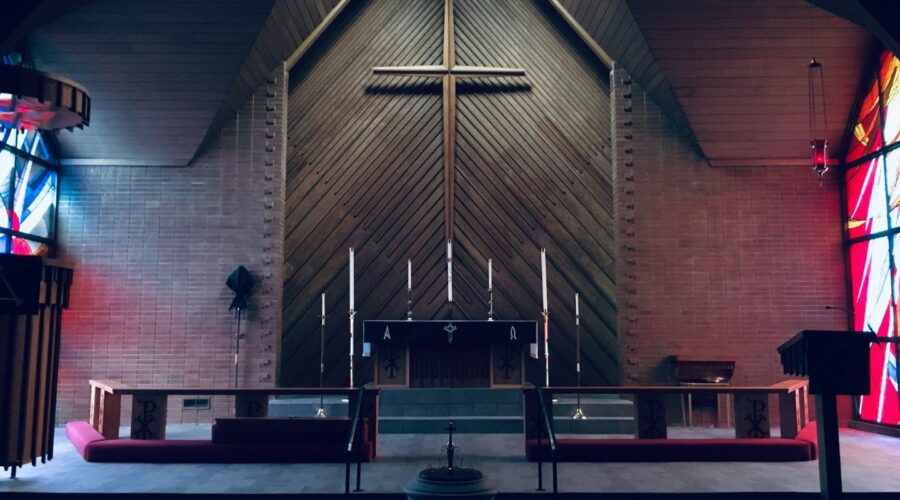
Unlocking the Meaning of Mass Readings Today
Mass readings form the cornerstone of Catholic liturgy, offering spiritual nourishment and guidance to the faithful. Each day, readings are chosen from the Bible to provide insight into the day’s theme or feast. Understanding these readings is crucial for a meaningful and enriching worship experience.
Daily Mass Readings: A Foundation of Faith
Structure of Mass Readings
A typical Catholic Mass consists of two readings:
* First Reading: Usually taken from the Old Testament, it establishes the historical or prophetic context for the day’s message.
* Second Reading: Usually from the Epistles or Acts of the Apostles, it provides apostolic commentary or interpretation of the day’s theme.Reading the Bible During Mass
* Listen attentively: Allow the readings to penetrate your mind and heart.
* Pay attention to context: Understand the readings within the context of the liturgical season and feast being celebrated.
* Reflect on the message: Ponder the readings’ relevance to your daily life and growth in faith.Types of Mass Readings
Weekday Readings
These readings follow a three-year cycle, allowing for a wide range of biblical texts to be covered.
Sunday Readings
Sunday readings are more festive and thematic, often related to the liturgical season or major feast. They include a third reading, the Gospel, which directly recounts the life and teachings of Jesus Christ.
Special Occasion Readings
During special events like Christmas, Easter, and saint’s feast days, unique readings are chosen to celebrate the occasion.
Resources for Understanding Mass Readings
* Online Bible resources: Websites like BibleGateway and USCCB.org provide easy access to daily readings.
* Parish bulletins or websites: Many parishes provide printed or online bulletins with readings and homily reflections.
* Scripture study groups: Churches often offer group discussions to deepen understanding of the readings.Tips for a Meaningful Mass Reading Experience
* Read the readings beforehand: Preview the readings online or in your missal to familiarize yourself with the content.
* Prepare your heart: Spend a few moments before Mass reflecting on the day’s theme and readings.
* Join in with others: Participate in the Responsorial Psalm, which responds to the readings with song.
* Engage in personal prayer: Use the readings as a springboard for personal reflection and prayer.
* Seek guidance: Don’t hesitate to ask a priest, deacon, or other knowledgeable person for clarification or insights.Conclusion
Mass readings are a vital component of Catholic liturgy, offering a rich source of spiritual nourishment. By understanding these readings, embracing their significance, and engaging with them wholeheartedly, we can deepen our connection with God and live more intentionally in our faith journey.
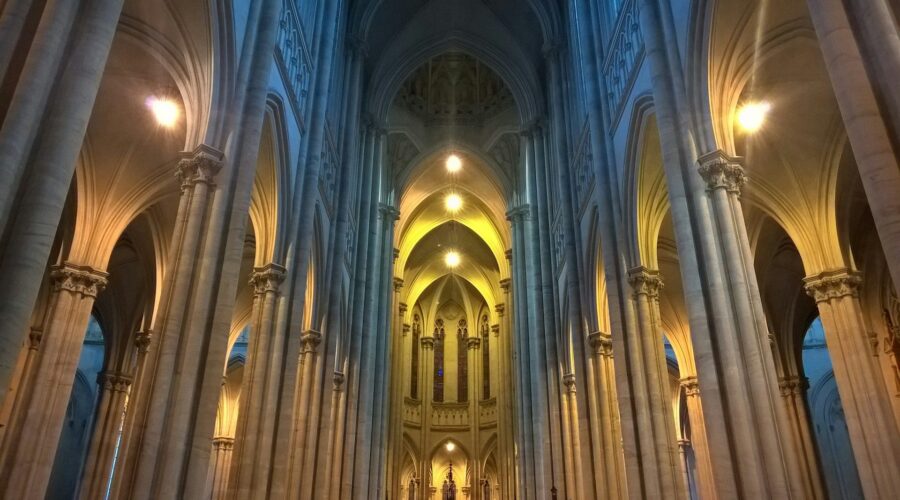
Lutheran Church: A Comprehensive Guide
What is the Lutheran Church?
The Lutheran Church is a Protestant Christian denomination that originated in the 16th century during the Protestant Reformation. It is named after Martin Luther, a German theologian and reformer who challenged the teachings and practices of the Roman Catholic Church.
Lutheran churches are typically characterized by their focus on the Bible, their belief in justification by faith alone, and their use of the two sacraments of baptism and Holy Communion.
Lutheran Beliefs
Lutheran beliefs are based on the teachings of Martin Luther and the Lutheran Confessions, which are a collection of doctrinal statements that were developed in the 16th century.
- Sola Scriptura: The Bible is the sole source of authority for Christian faith and practice.
- Sola Fide: Justification is by faith alone in Jesus Christ.
- Sola Gratia: Salvation is a gift of God’s grace, not something that can be earned.
Lutheran Worship
Lutheran worship is typically liturgical, meaning that it follows a set order of service. The central elements of Lutheran worship are the reading of the Bible, the preaching of the sermon, and the celebration of Holy Communion.
Lutheran churches use a variety of music in worship, including hymns, choral music, and organ music.
Lutheran Sacraments
Lutheran churches recognize two sacraments: baptism and Holy Communion. Baptism is a sacrament of initiation into the Christian faith, and Holy Communion is a sacrament of remembrance of Christ’s death and resurrection.
Lutheran churches believe that the sacraments are effective means of grace, but they do not believe that they are necessary for salvation.
Lutheran Church Structure
The Lutheran Church is organized into a variety of synods, or regional bodies. Each synod has its own bishop and a constitution that governs its operations.
The Lutheran Church has a strong commitment to ecumenism, and it is a member of the World Council of Churches.
Lutheran Church History
The Lutheran Church was founded in 1517 when Martin Luther posted his Ninety-Five Theses on the door of the Wittenberg Church in Germany. Luther’s theses challenged the teachings of the Roman Catholic Church on indulgences, and they sparked the Protestant Reformation.
The Lutheran Church spread rapidly throughout Europe, and by the end of the 16th century, it had become one of the major Protestant denominations.
Lutheran Mission
The Lutheran Church has a long history of mission work. Lutheran missionaries have served in all parts of the world, and they have played a major role in the spread of Christianity.
Today, the Lutheran Church continues to be involved in mission work. Lutheran churches support a variety of mission agencies, and they send missionaries to serve in all parts of the world.
Lutheran Resources
There are a variety of resources available for Lutherans and those interested in learning more about the Lutheran Church.
- The Lutheran Church – Missouri Synod
- The Evangelical Lutheran Church in America
- The Lutheran Mission Society
Conclusion
The Lutheran Church is a vibrant and growing Christian denomination with a rich history and tradition. Lutheran churches are committed to the Bible, the sacraments, and the mission of Jesus Christ.
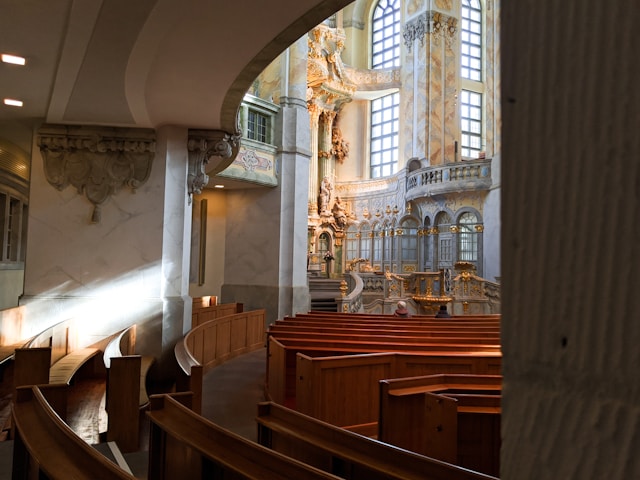
Calvary Baptist Church: A Comprehensive Guide
“`html
Calvary Baptist Church is a historic and vibrant evangelical church located in the heart of New York City. Founded in 1847, it has been a beacon of faith and community engagement for over a century and a half. This blog post will provide a comprehensive guide to Calvary Baptist Church, exploring its history, beliefs, ministries, and impact.
History and Legacy
Calvary Baptist Church traces its roots to a small group of Baptists who began meeting in 1847 on the Lower East Side of Manhattan. Over the years, the church has grown and relocated several times, eventually settling in its current location in Midtown Manhattan in 1910.
Key Events
- 1847: Church founded by Rev. Samuel H. Cone
- 1869: First permanent church building constructed
- 1907: Rev. John Roach Straton becomes pastor
- 1910: Church moves to its current location
- 1946: Rev. Billy Graham preaches at Calvary Baptist Church
Beliefs and Theology
Calvary Baptist Church adheres to the doctrines of evangelical Christianity, emphasizing the Bible as the sole authority for faith and practice. The church’s beliefs include:
Core Tenants
- The Trinity: God is one God in three persons: the Father, the Son, and the Holy Spirit
- The Deity of Christ: Jesus Christ is the eternal Son of God who became fully human
- The Atonement: Jesus Christ died on the cross to pay the penalty for our sins
- Salvation by Faith: We are saved by grace alone through faith in Jesus Christ
- The Resurrection: Jesus Christ rose from the dead and ascended to heaven
Ministries and Outreach
Calvary Baptist Church offers a wide range of ministries and outreach programs to meet the needs of its members and the surrounding community. These include:
Ministries
- Sunday School: Bible study classes for all ages
- Worship: Traditional and contemporary worship services
- Discipleship: Small groups and mentoring programs
- Evangelism: Outreach programs to share the gospel
- Social Justice: Ministries addressing issues such as poverty and homelessness
Outreach Programs
- Food pantry
- Clothing drive
- Soup kitchen
- Tutoring and mentoring
- Community events
Impact and Influence
Calvary Baptist Church has had a significant impact on the city of New York and beyond. The church has:
Historical Contributions
- Promoted social reforms, such as the abolition of slavery
- Played a key role in the founding of several colleges and universities
- Hosted major religious and cultural events
Contemporary Influence
- Continues to be a vibrant and active congregation
- Provides a safe and welcoming space for people of all backgrounds
- Promotes interfaith dialogue and collaboration
Conclusion
Calvary Baptist Church is a thriving evangelical church with a rich history and a commitment to serving its members and the surrounding community. Its beliefs, ministries, and outreach programs have made a lasting impact on the city of New York and beyond. Whether you are seeking spiritual growth, community involvement, or a place to serve others, Calvary Baptist Church is a place where you can find a home and make a difference.
“`

Unlocking the Secrets of Shepherd Church: A Comprehensive Guide
Are you seeking a vibrant and transformative faith community? Shepherd Church offers a welcoming space for individuals from all walks of life. In this comprehensive guide, we will delve into the distinctive aspects of Shepherd Church, exploring its beliefs, mission, and impact.
History and Mission
Founded in 1974 by Pastor Dudley Rutherford, Shepherd Church began as a small gathering in a rented space. Over the years, it has grown into a thriving congregation with multiple campuses in California and a global reach. The church’s mission is to “connect people to God and to one another, helping them grow in their faith and purpose.”
Core Beliefs
Shepherd Church adheres to the following core beliefs:
- The Bible is the authoritative Word of God.
- God is the Creator and Sustainer of all things.
- Jesus Christ is the only begotten Son of God, fully God and fully human.
- Salvation is a free gift from God, received by faith in Jesus Christ.
li>The Holy Spirit convicts, guides, and empowers believers.
Worship Experience
Shepherd Church’s worship services are vibrant and engaging, featuring contemporary music, inspiring sermons, and opportunities for personal reflection and prayer. The church values diversity and welcomes people from all backgrounds to participate in its worship.
Small Groups and Ministries
Small groups are the heart of Shepherd Church’s community. Members gather in smaller settings to study the Bible, pray, and build relationships. The church also offers a wide range of ministries, including:
- Children’s and youth programs
- Marriage and family counseling
- Community outreach programs
- Missions outreach
Leadership and Structure
Shepherd Church is led by a team of pastors and elders who are committed to providing spiritual leadership and oversight. The church uses a congregational model of governance, in which all members have a voice in decision-making.
Global Impact
Shepherd Church has a strong commitment to global missions. The church supports missionaries in over 30 countries, providing resources, training, and prayer support. Shepherd Church also organizes mission trips to various parts of the world.
Membership and Involvement
Becoming a member of Shepherd Church is a simple process that involves attending a membership class and expressing a commitment to the church’s mission. Members are encouraged to get involved in the church’s activities, such as small groups, ministries, and volunteer opportunities.
Benefits of Membership
Membership at Shepherd Church offers several benefits, including:
- Access to small groups and ministries
- Prayer support and counseling
- Opportunities for personal growth and discipleship
- A sense of community and belonging
How to Get Involved
To learn more about Shepherd Church and get involved, visit the church’s website or attend one of its services. You can also contact the church office for more information.
Table of Campus Locations
| Campus | Address | Phone Number |
|—|—|—|
| Downtown Los Angeles | 735 S Figueroa St, Los Angeles, CA 90017 | (213) 488-7400 |
| Santa Monica | 1855 Lincoln Blvd, Santa Monica, CA 90404 | (310) 829-3900 |
| Pasadena | 2834 E Colorado Blvd, Pasadena, CA 91107 | (626) 792-1600 |
| Orange County | 7565 Irvine Center Dr, Irvine, CA 92618 | (714) 955-8000 |Conclusion
Shepherd Church is a vibrant and welcoming faith community that offers a rich and transformative experience. Through its worship services, small groups, ministries, and global impact, the church provides a supportive and inspiring environment for individuals to grow in their faith and purpose. Whether you are seeking a spiritual home or a place to serve others, Shepherd Church has something to offer every seeker.
We invite you to explore all that Shepherd Church has to offer. Visit our website or attend one of our services to learn more about our mission, meet our team, and experience the transformative power of community.

Unlock Spiritual Insights with Jentezen Franklin Sermons
About Jentezen Franklin
Jentezen Franklin is a renowned pastor, author, and televangelist known for his powerful and transformative messages. With over 30 years of ministry experience, he leads Free Chapel, a multi-campus megachurch in Gainesville, Georgia, that reaches millions worldwide. Franklin’s sermons draw large audiences due to his engaging style and his ability to connect with people on a personal level.
The Power of Jentezen Franklin’s Sermons
Jentezen Franklin’s sermons are known for their:
- Biblical Foundation: Rooted in the Bible, his messages provide practical insights into God’s Word and its relevance to everyday life.
- Inspirational Content: Franklin’s messages uplift and motivate, encouraging listeners to live a life of purpose and fulfillment.
- Real-Life Application: He bridges the gap between faith and daily life, providing guidance and practical steps for spiritual growth.
- Transformational Impact: Many people have experienced life-changing moments through his sermons, leading to spiritual breakthroughs, personal healing, and strengthened relationships.
Popular Sermon Series
Some of Jentezen Franklin’s most popular sermon series include:
- The Fight of Your Life: Addresses the spiritual battles Christians face and provides strategies for overcoming them.
- Kingdom Keys: Explores the seven principles for unlocking God’s blessings and living a victorious life.
- The Power of a Positive Attitude: Emphasizes the importance of maintaining a positive outlook and its impact on all aspects of life.
- Becoming a Man/Woman of God: Focuses on Christian identity, growth, and the roles men and women play in God’s kingdom.
How to Access Jentezen Franklin’s Sermons
There are several ways to access Jentezen Franklin’s sermons:
- Online: Visit the Free Chapel website or YouTube channel to watch and listen to his sermons.
- Television: Check your local listings for channels that broadcast his sermons.
- Mobile App: Download the Free Chapel app for easy access to sermons, podcasts, and other resources.
- Live Events: Attend live events featuring Jentezen Franklin at Free Chapel or other venues.
Benefits of Regularly Listening to Jentezen Franklin’s Sermons
Regularly listening to Jentezen Franklin’s sermons can provide numerous benefits, including:
- Spiritual Growth: Deepens understanding of the Bible and encourages personal growth in faith.
- Inspiration and Encouragement: Provides motivation and inspiration to face challenges and live a life of purpose.
- Practical Guidance: Offers practical tips and strategies for navigating daily life as a Christian.
- Community Connection: Connects listeners with a global community of believers and provides a sense of belonging.
- Life Transformation: Listening to his messages can lead to positive life changes, such as improved relationships, personal healing, and strengthened faith.
Conclusion
Jentezen Franklin’s sermons are a valuable resource for spiritual growth, inspiration, and guidance. His engaging style and biblical foundation have resonated with millions worldwide. Whether you are looking to deepen your understanding of the Bible, find encouragement in your faith journey, or navigate the challenges of daily life as a Christian, Jentezen Franklin’s sermons offer practical insights and life-changing messages.
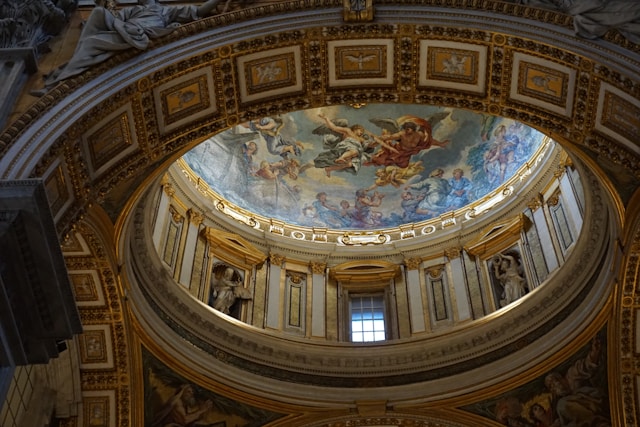
Life Point Church: A Comprehensive Guide
Welcome to Life Point Church, a vibrant and growing community of believers. With several campuses across the globe, we’re committed to helping people discover and grow their relationship with Jesus Christ.
What is Life Point Church?
Life Point Church is a non-denominational, evangelical Christian church founded in 1995. Our mission is to create a welcoming and inspiring environment where people can encounter the love of God, grow in their faith, and make a difference in the world.
Our Beliefs
We believe in the Bible as the inspired and authoritative Word of God. Our core beliefs include:
- The Triune God: Father, Son, and Holy Spirit
- The deity of Jesus Christ
- The salvation of all who believe in Jesus
- The power of the Holy Spirit in the life of a believer
- The importance of the local church
Our Campuses
Life Point Church has multiple campuses worldwide, including:
What to Expect at a Service
Our services are designed to be uplifting, engaging, and relevant. You can expect:
- Contemporary worship music
- A dynamic message from the Bible
- Opportunities to connect with others
- Activities for children and youth
Ways to Get Involved
We encourage you to get involved in our community. There are many ways to serve, including:
- Small groups
- Volunteer opportunities
- Outreach programs
- Leadership roles
Impact on the Community
Life Point Church is passionate about making a difference in our communities. We partner with local organizations and support various initiatives, including:
- Food pantries
- Homeless shelters
- Mission trips
- Community events
Get Connected
We invite you to join us and connect with our vibrant community. Visit our website at lifepoint.org or contact us at [email address] for more information.
Frequently Asked Questions
Q: Is Life Point Church a cult?
A: No, Life Point Church is not a cult. We are a Christian church that believes in the Bible and the orthodox Christian faith.
Q: What is the cost to attend Life Point Church?
A: It is free to attend Life Point Church. We do not charge for any of our services or programs.
Q: What should I wear to a Life Point Church service?
A: We encourage people to dress comfortably and casually. You will see a wide range of styles at our services.
Q: Can I bring my children to Life Point Church?
A: Yes, we welcome children at all our services. We have dynamic programs and activities designed for all ages.
Q: How can I become a member of Life Point Church?
A: To become a member, you need to attend a New Member Class and complete a membership application. For more information, please visit our website or contact us.
We hope to see you soon at Life Point Church.
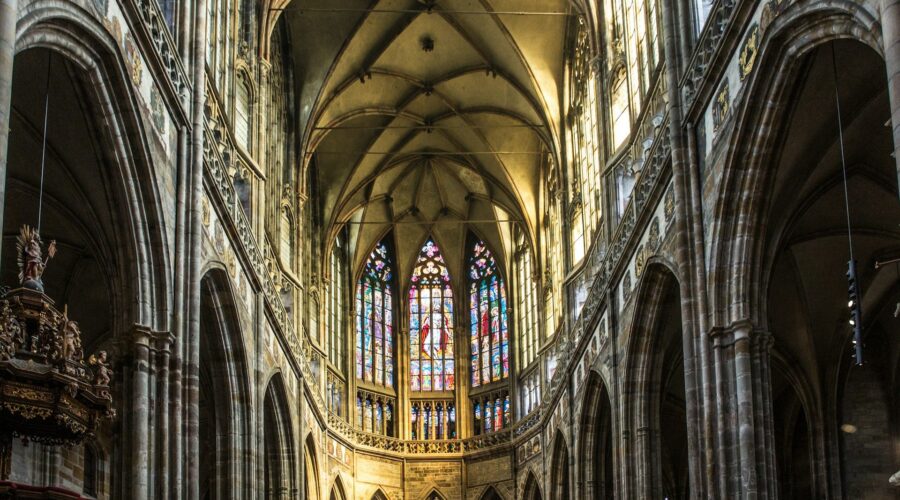
Discover the Majestic Notre Dame Basilica: A Parisian Masterpiece
**Notre Dame Basilica:** A Timeless Treasure in the Heart of Paris
A Historical Odyssey
Nestled in the very heart of Paris, Notre Dame Basilica stands as an enduring testament to architectural ingenuity, artistry, and religious fervor. Its genesis can be traced back to the 12th century, when Bishop Maurice de Sully embarked on the ambitious project of constructing a grand cathedral that would befit the grandeur of the French capital.
Laying the Foundation
The cornerstone of Notre Dame was laid in 1163, marking the commencement of a colossal construction endeavor that spanned centuries. It was a testament to the unmatched skill of medieval builders who harnessed rudimentary tools and techniques to create a structure of unparalleled beauty and resilience.
As the cathedral’s framework took shape, master masons and sculptors toiled tirelessly, etching intricate designs and biblical narratives into the cathedral’s every nook and cranny. The result was a symphony of Romanesque and Gothic architectural styles, a harmonious blend of different eras.
Architectural Splendor
The Grand Facade
The cathedral’s imposing western facade serves as a grand gateway to the sacred space within. It is adorned with three intricate portals, each depicting a different scene from the life of Christ. Above the portals, a magnificent rose window radiates with vibrant hues of stained glass, casting an ethereal glow upon the interior.
The Majestic Nave
Upon stepping inside Notre Dame, visitors are greeted by a soaring nave that stretches towards the majestic altar. Its ribbed vaults, supported by slender columns, create a sense of awe-inspiring height and grandeur. The nave is illuminated by a series of stunning stained glass windows, each panel telling a biblical tale.
The Transepts and Choir
Transepts extend from the nave, creating a cruciform layout. The north transept houses the iconic “Piéta” by Nicolas Coustou, while the south transept is home to the magnificent organ with its five keyboards and nearly 8,000 pipes.
Beyond the transepts, the choir is reserved for religious ceremonies. Its ornate stalls are intricately carved with biblical scenes, while the high altar is a masterpiece of gold and enamel.
Art and Symbolism
Stained Glass Marvels
Notre Dame’s stained glass windows are a symphony of color and artistry. From the delicate hues of the Rose Window to the vibrant scenes depicted in the nave windows, each panel is a testament to the skill of medieval glaziers.
Sculptural Masterpieces
Throughout the cathedral, visitors will encounter an array of exquisite sculptures. Gargoyles perched high on the exterior serve as both decoration and water spouts, while the interior is adorned with statues of saints, apostles, and biblical figures.
Symbolic Significance
Every aspect of Notre Dame’s design holds symbolic significance. The number of towers, portals, and windows represents important theological concepts, while the intricate carvings and stained glass scenes convey messages of faith and redemption.
Restoration and Resilience
Over the centuries, Notre Dame has undergone numerous renovations and restorations. In the 19th century, a major restoration led by the architect Eugène Viollet-le-Duc added many of the cathedral’s iconic features, including the iconic spire.
In 2019, a devastating fire ravaged the cathedral, destroying the spire and causing significant damage to the roof and interior. However, thanks to the unwavering efforts of skilled artisans and the support of people worldwide, Notre Dame is undergoing an extensive restoration that will preserve its legacy for generations to come.
Tips for Visitors
* **Book a guided tour:** Guided tours provide an in-depth exploration of Notre Dame’s history, architecture, and art.
* **Visit during off-peak hours:** Aim to visit during non-peak hours to avoid crowds and fully appreciate the cathedral’s grandeur.
* **Explore the surrounding area:** Take advantage of your visit to explore the charming streets and historic sites surrounding Notre Dame.
* **Respect the sanctity of the space:** Notre Dame is an active place of worship, so remember to be respectful and maintain silence during religious services.
* **Prepare for security checks:** Security checks may be in place at the cathedral entrance, so be prepared to have your belongings inspected.Notre Dame Basilica: A Symbol of Faith, History, and Art
Notre Dame Basilica is more than just a building; it is a symbol of faith, history, and artistic brilliance. Its enduring presence in the heart of Paris has witnessed countless events, from royal coronations to national celebrations. As it continues to stand as a testament to the human spirit, Notre Dame Basilica remains a timeless treasure that inspires and awes visitors from around the globe.
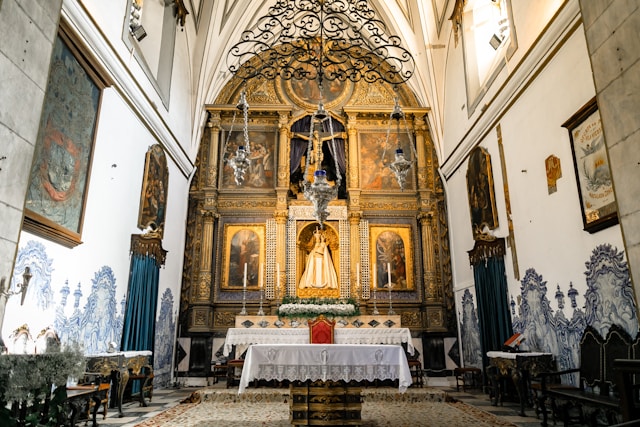
The Catholic Missal: Your Essential Guide to the Mass
What is a Missal?
A missal is a liturgical book used by the Roman Catholic Church during Mass. It contains the readings, prayers, and other texts for the Mass, and is used by the priest, deacon, and other ministers to lead the congregation in worship.
History of the Missal
The missal has its origins in the early days of the Church, when the texts of the Mass were collected into a single book. Over time, the missal underwent a number of changes, and by the Middle Ages, it had become the standard liturgical book used throughout the Western Church.
The Structure of the Missal
The modern Roman Missal is divided into four main parts:
* **The Proper of the Season:** This section contains the readings, prayers, and other texts for the various seasons of the liturgical year, such as Advent, Christmas, Lent, and Easter.
* **The Proper of Saints:** This section contains the readings, prayers, and other texts for the feast days of saints.
* **The Ordinary of the Mass:** This section contains the texts that are used at every Mass, such as the Gloria, the Creed, and the Eucharistic Prayer.
* **The Roman Canon:** This section contains the central prayer of the Mass, in which the bread and wine are consecrated.Using the Missal
The missal is an essential resource for anyone who wishes to participate fully in the Mass. By following the readings, prayers, and other texts, you can deepen your understanding of the Mass and its meaning.
Here are a few tips for using the missal:
* **Before Mass:** Take some time to read the readings for the day. This will help you to prepare for the Mass and to participate more fully in the liturgy.
* **During Mass:** Follow the readings, prayers, and other texts in the missal. This will help you to stay focused on the Mass and to participate in it more actively.
* **After Mass:** Take some time to reflect on the readings and prayers of the Mass. This will help you to apply the Mass to your own life and to grow in your faith.Conclusion
The Catholic missal is an essential resource for anyone who wishes to participate fully in the Mass. By following the readings, prayers, and other texts, you can deepen your understanding of the Mass and its meaning.